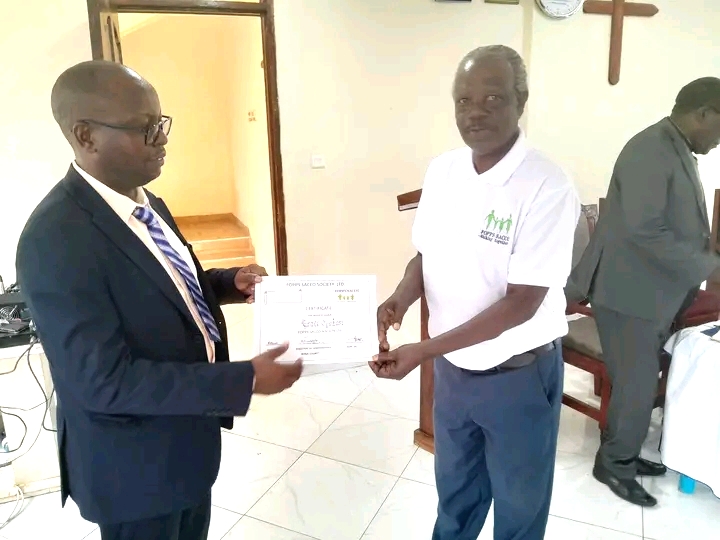By Azael Masese
Saccos defied a tough business environment posed by Covid-19 to report growth in three market portfolios; asset base, deposits and loan portfolios in the 2020/2021 Financial Year (FY).
The finding was revealed in the Sacco Supervision Annual Report, 2021, released on August 3, 2022.
SASRA Board chairman George Murathe said the growth underscores the resilience of Kenyan Sacco business model even in the wake of external shocks.
The Sacco sub-sector’s total assets grew by 9.93 per cent in 2021 to reach Ksh807.11 billion from Ksh734.22 billion in 2020.
During the same period under review, total deposits grew by 9.80 per cent to reach Ksh564.89 billion in 2021 compared to Ksh514.46 billion reported in 2020.
Loans increased by 9.67 per cent in 2021 to Ksh608.75 billion from Ksh555.05 billion reported in 2020.
However, this is the first time the two categories of Saccos (deposit-taking and non-deposit taking) have had their performance indices reported as one sub-sector.
Previously, only deposit-taking Saccos had their annual performance reported by the regulator.
Operationalization of the Regulations 2020 placed non-deposit taking Saccos under the ambit of SASRA and their performances synchronized.
The 176 DT-Saccos had the highest proportion of the total assets amounting to Ksh691.01 billion, representing 85.63 per cent.
The total assets for the 185 non-withdrawable deposit-taking (NWDT) Saccos was a paltry 14.37 per cent.
The DT Saccos also had the lion’s share of the total deposits’ portfolio at Ksh474.25 billion, representing 83.95 per cent.
The NWDT Saccos shared the remaining 16.05 per cent of the total deposits’ portfolio.
The DT Saccos issued gross loans amounting to Ksh522.25 billion while the NWDT-Saccos issued Ksh86.50 billion.
Mwalimu National Sacco maintained its first position as the wealthiest Sacco, reporting growth in asset base from Ksh57.73 billion in 2020 to Ksh 60.60 billion in 2021.
Stima Sacco came second with an asset base of Ksh46.8 billion in 2021 from Ksh41 billion in 2020.
Kenya National Police DT Sacco emerged the third wealthiest with an asset base of Ksh44 billion compared to Ksh39.1 billion reported in 2020.
Harambee and Afya Saccos were ranked fourth and fifth respectively as Unaitas and Imarisha scooped the sixth and seventh slots respectively.
Tower Sacco occupied position 8, UN Sacco position 9 while Ukulima Sacco emerged 10th.
The greatest casualty was Metropolitan Sacco whose asset base shrank from Ksh16.73 billion in December 2020 to Ksh10.56 billion in 2021, effectively dropping from position 6 to 15.
According to the report, the 49 Agriculture-based Saccos continued their membership dominance at 46.79 per cent compared to the 41.93 per cent reported in the 2020 report.
They were followed by the 117 government-based Saccos which had a proportion of 35.39 per cent of the total members.
Government-based Saccos comprised of : 40 teachers-based Saccos, 26 State Corporations-based Saccos, 10 public university Saccos, 10 county government-based and 31 government general services Saccos, whose proportion of membership were 22.61 per cent, 3.40 per cent, 0.37 per cent, 1.64 per cent and 7.36 per cent in that order.
Murathe remained optimistic that the asset, deposits and loan portfolios will retain the growth pace in 2022.
He noted that this will be driven by the relaxation of the Covid-19 protocols and restrictions, which shall allow the economy to operate at its full potential.
Like it has been in the past, distribution of the total assets and total deposits among the 361regulated Saccos depicts a very heavy concentration of the assets and deposits among just a few of the Saccos.
“In particular, 42 large-tier Saccos composed of 39 DT Saccos and 3 NWDT Saccos with assets above Ksh5 billion controlled 67.11 per cent of the subsector’s total assets,” SASRA CEO Peter Njuguna notes.
This means that the remaining 319 regulated Saccos were left to share the remaining 32.89 per cent of the total assets portfolio with the implications that on average these Saccos had relatively small asset bases.
Assets are the revenue and income-generating resource of Saccos and the small average proportionate asset portfolios technically implies that the average income generated by these Saccos was relatively low.
“It thus brings into focus their sustainability, particularly in light of sustained competition from the large tier Saccos which enjoy economies of scale as well as other financial service providers,” Njuguna states.
Non-remittance remains the bane blight in the sub-sector and continues to undermine the performance and competitiveness of Saccos.
A total of Ksh3.40 billion was reportedly owed by various employer institutions to the 361 regulated Saccos in operation by close of 2021. This is however a reduction compared to Ksh5.05 billion owed in 2020.
Nevertheless, 63.34 per cent of the non-remitted funds owed is related to loan repayments.
“This means that the subject loans have since been classified as non-performing by the Saccos and provisions made in respect thereof, thereby reducing the surpluses and profitability of the Saccos,” noted Murathe.


